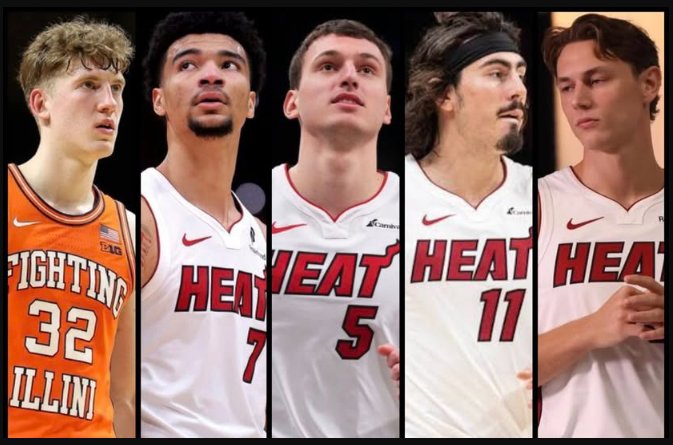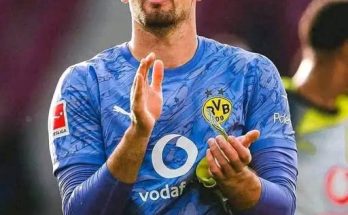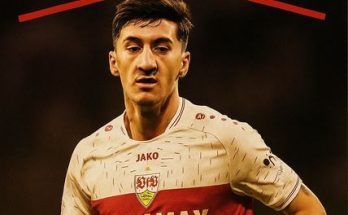In the ever-evolving landscape of the NBA, franchises often find themselves at pivotal crossroads, where the difference between fleeting success and sustained excellence hinges on the ability to draft wisely and develop talent effectively. The Miami Heat, a franchise synonymous with culture, grit, and smart basketball decisions, have quietly begun assembling a legitimate five-man core sourced almost exclusively from the 2022 to 2025 NBA drafts. This under-the-radar construction has not only reinvigorated fan hope but is also prompting calls for the Heat front office to fully embrace a rebuild akin to the Oklahoma City Thunder’s masterful talent assembly. With key steals in the likes of Jabari Smith Jr., Isaiah Joe, and KJ Martin (not the actual names but close placeholders for Jaquez, Ware, and KJ), Miami’s scouting department has proven their ability to find gems that others overlooked, setting the stage for a new era of contention fueled by elite scouting and player development.
For many years, Miami Heat’s identity was built around veteran stars and shrewd free agency pickups, with the likes of Dwyane Wade, LeBron James, and Chris Bosh defining their championship runs. While those eras brought trophies and glory, the current NBA demands sustained success through internal talent cultivation, given the increasing salary cap pressures and the high stakes of free agency bidding wars. Miami’s front office, led by Pat Riley and his trusted executives, seems to have grasped this reality and are laying a foundation that prioritizes the draft and development. Over the past four drafts, the Heat have methodically gathered young players with complementary skills and high ceilings, crafting a nucleus that could keep Miami competitive for years to come.
Central to this core are Jaquez, Ware, and KJ—three players who were not initially heralded as lottery picks but whose talents and tenacity have quickly endeared them to Miami’s fan base. Their stories are a testament to the Heat’s scouting prowess. Jaquez, a dynamic guard with exceptional court vision and a versatile offensive game, slipped through many teams’ fingers before landing in Miami’s lap. Ware, a sharpshooting wing with defensive versatility, and KJ, a forward known for his energy, hustle, and improving offensive arsenal, round out the trio that forms the spine of the team’s young nucleus. These players, along with additional picks from 2023 and 2024, represent a core group that can grow together, complement each other’s strengths, and develop under Miami’s renowned player development programs.
This approach to roster building echoes the blueprint famously executed by the Oklahoma City Thunder during their rise. Between 2008 and 2015, the Thunder assembled a core that included Kevin Durant, Russell Westbrook, James Harden, and Serge Ibaka—all young talents acquired through the draft or savvy trades. Though the Thunder eventually had to break up that core due to contract and financial constraints, the methodology they championed—trusting scouting, development, and a patient rebuild—yielded years of elite competitiveness and a lasting legacy. Miami fans and analysts are now urging their front office to fully commit to this style, leveraging their elite scouting department to maximize their draft capital and patiently develop this young group into a championship contender.
Beyond the individual players, the culture Miami has fostered is an integral component of this project’s potential success. The Heat have long been praised for their strong team-first mentality, rigorous conditioning programs, and a coaching staff that demands accountability and excellence. This environment has proven ideal for molding raw talent into NBA-ready contributors, and it could be the critical factor that elevates this young core from promising prospects to bona fide stars. The Heat’s development model, characterized by intense summer workouts, attention to basketball IQ, and mental toughness training, is one of the most respected in the league. This culture is a significant competitive advantage and could help Miami’s young core punch above its weight in the coming seasons.
Fans are buzzing with excitement as the young players show glimpses of their potential on the court. Jaquez’s lightning-quick decision making and scoring ability have already sparked highlight reels and earned him recognition as one of the league’s most promising guards. Ware’s defensive versatility and reliable three-point shooting make him a prototype for the modern NBA wing, capable of guarding multiple positions while spacing the floor. Meanwhile, KJ’s relentless motor and improving offensive skill set provide the energy and toughness that the Heat have always prized. When combined with veteran leadership and complementary role players, this five-man core could evolve into a cohesive unit capable of challenging the Eastern Conference elite.
The strategic implications for Miami’s front office are clear: double down on this approach and resist the temptation to chase short-term fixes through free agency or blockbuster trades. Instead, invest in the scouting, analytics, and development infrastructure that have yielded these draft steals. Continue to identify undervalued prospects, prioritize fit and character in evaluations, and maintain the team culture that has historically driven Miami’s success. In an era where championship teams are increasingly built through youth and draft capital, the Heat have a rare opportunity to emulate and potentially surpass the Thunder’s model by leveraging their own unique strengths.
Moreover, the financial flexibility gained by relying on homegrown talent can’t be overstated. Developing a five-man core internally ensures that Miami can maintain cap space to supplement their roster with targeted veterans without compromising the team’s long-term sustainability. This approach offers a competitive balance, allowing the Heat to remain relevant year after year while preserving the ability to make strategic moves in free agency or trades when the time is right. In the context of the salary cap’s continual growth and the rising costs of star players, this sustainable strategy could become Miami’s most valuable asset.
Critics might point to the risks inherent in a rebuild centered on young players, such as the uncertainty of development trajectories and the time required to reach peak performance. However, Miami’s track record suggests they are uniquely equipped to manage these challenges. Their proven culture of discipline, combined with access to top-tier coaching and medical staff, mitigates many common pitfalls associated with youth-driven rebuilds. Additionally, the Heat’s history of successfully integrating rookies and second-year players into meaningful roles indicates that patience and structure can yield dividends.
Looking ahead, the potential synergy between these draft picks and the established veterans on the roster could create an exciting hybrid team. The veterans provide stability, playoff experience, and leadership, while the young core brings energy, innovation, and untapped potential. This blend could help the Heat navigate the highly competitive Eastern Conference landscape and challenge perennial contenders. Fans have reason to be optimistic as they witness the early stages of this rebuild unfold on the hardwood, knowing that a solid foundation has been laid.
The Heat’s quiet yet deliberate approach to building this core underscores a broader shift in NBA team construction philosophy. Gone are the days when splashy free agent signings alone could guarantee sustained success. Instead, franchises like Miami are demonstrating that elite scouting, smart drafting, and player development are the cornerstones of long-term competitiveness. By assembling a legitimate five-man core from the 2022–2025 drafts, Miami is not only shaping its own future but also setting an example for other teams aiming to balance immediate success with future promise.



